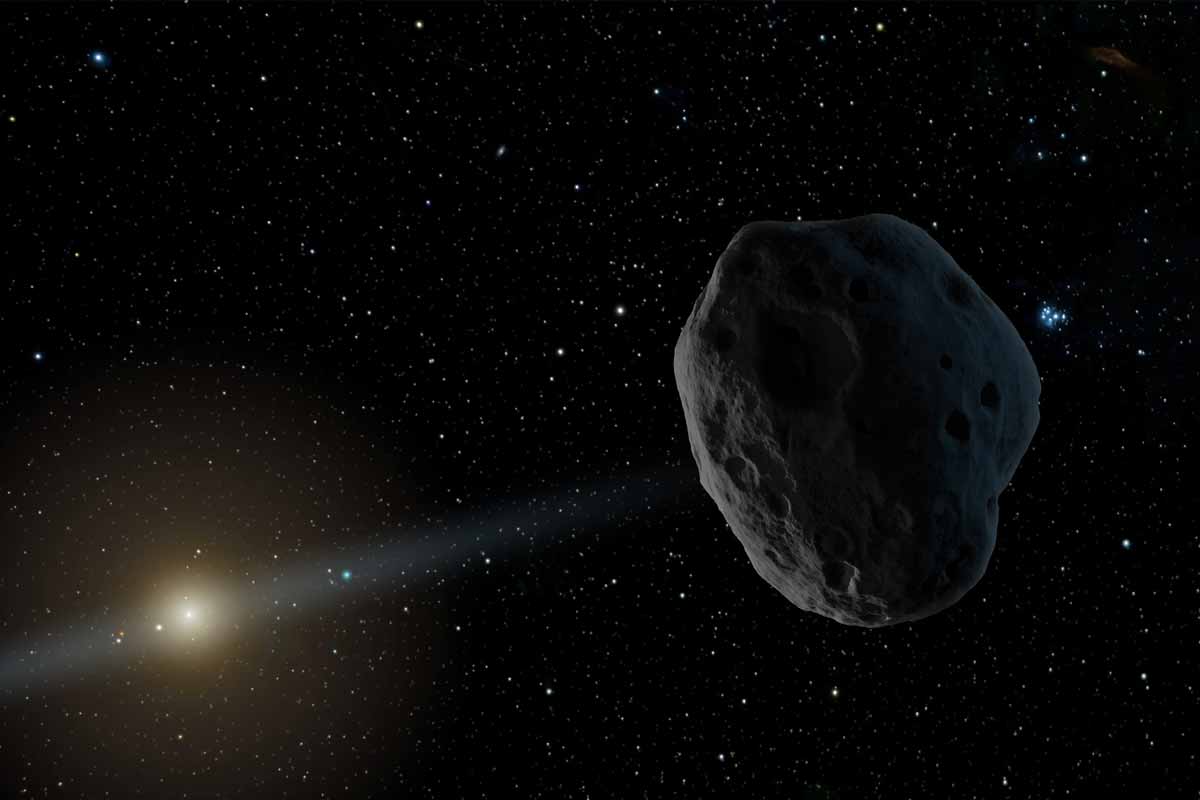A11pl3Z arrived as a whisper on June 25, then as a riddle racing at 245,000 km/h. NASA’s ATLAS flagged the object, and astronomers quickly saw rules bending. Size estimates range from ten to twenty kilometers, possibly the third-largest ever spotted. Its path cuts across the Solar System with a brief, blazing visit, while questions stack up. Is it a quiet comet, a dark asteroid, or something new that refuses every familiar label?
Why this visitor could reshape our view of the Solar System
Spotted by NASA’s ATLAS on June 25, A11pl3Z travels at 245,000 km/h and ignores familiar curves. Its trajectory is hyperbolic, so the Sun cannot capture it. Estimates place its size between ten and twenty kilometers, potentially the third-largest object humans have ever recorded. That scale focuses minds across observatories worldwide.
Comets are icy, dusty bodies that warm near the Sun, release gas, and grow a glowing coma and tail. Most originate in the Kuiper Belt or the distant Oort Cloud. Those hallmarks help classify travelers; however, A11pl3Z currently shows no visible coma and no dust tail at all.
Two confirmed interstellar visitors set the stage: ʻOumuamua in 2017, and 2I/Borisov in 2019. Both entered and exited quickly on hyperbolic paths. If A11pl3Z is ten to twenty kilometers wide, its flyby through the Solar System could be the largest interstellar passage ever directly studied by professional and amateur teams.
How a hyperbolic path changes the prediction game
A11pl3Z moves on a hyperbolic trajectory, which means the Sun’s gravity cannot hold it. Because it is unbound, the object spends little time near our star. Orbital solutions therefore treat its motion as a fast, straight swing rather than a closed ellipse like planets or comets under normal conditions.
Forecasts place a close approach to Mars in October, then the closest point to Earth in December. Earth will sit on the opposite side of the Sun, which eliminates any collision risk. Despite headlines, this brief pass through the Solar System registers as a spectacle, not a threat.
Speed sharpens the challenge. At roughly 245,000 km/h, A11pl3Z outruns most cataloged asteroids and rivals previous interstellar visitors. Small errors multiply quickly at that pace, so teams update ephemerides often while telescopes coordinate handoffs that keep the target centered and the data stream continuous across continents and longitudes.
What it might be: comet, asteroid, or something else
Current images show no coma and no tail, which complicates a simple comet label. That silence could mean an inactive comet with sealed surface layers, or a dark asteroid with low reflectivity. Unseen outgassing remains possible, yet it would need to be faint to escape detection at this distance.
European experts, including ESA’s Richard Moissl, say a comet remains the prime candidate, while acknowledging surprises happen. The James Webb Space Telescope can search for ices and organic signatures. The Vera C. Rubin Observatory will capture light curves to help constrain rotation, shape, and surface texture as brightness rises.
A third option lingers: something unclassified that blurs the line between asteroid and comet. If composition or behavior defies expectations, a new category could emerge. Either way, sampling an interstellar visitor inside the Solar System gives researchers a rare control case for models of how worlds form and evolve elsewhere.
What science hopes to learn across the Solar System
Astronomer Mark Norris estimates thousands of interstellar objects may traverse our neighborhood undetected. A11pl3Z could be the visible tip of that population. By measuring reflectivity, spectra, and density, teams can compare building blocks from other stars with material found near the Sun, and refine ideas about planetary system diversity.
Organic compounds, if present, would strengthen theories that life’s ingredients travel well. Fragments carried by interstellar visitors can seed dust clouds with chemistry that forms planets and oceans. Studying those traces inside the Solar System reveals whether our recipes resemble others, or whether we live with unusual mixtures or conditions.
Planetary defense also benefits. A11pl3Z is harmless, yet the exercise forces teams to rehearse tracking, calibration, and cross-network alerts. Every night spent following a fast target upgrades software, trims timing errors, and builds the playbook used when an object moves on a path that actually intersects Earth.
Why it matters now: timelines, safety, and public watch
October brings a close approach to Mars, followed by the nearest point to Earth in December. Because Earth will be across the Sun, the geometry guarantees safety. Observers expect brightness to change as angles shift, which helps pin down shape, spin, and surface roughness without sending a probe.
Professional arrays will lead, yet skilled amateurs can contribute by timing brightness dips and sharing images. Shared ephemerides keep telescopes synchronized. Crowdsourced timing complements deep exposures, so the picture of how the visitor moves through the Solar System sharpens, even as its stay remains short and its identity uncertain.
Teams will keep measuring speed, color, and spectra through the close passes. As the dataset grows, models will settle on comet, asteroid, or a new label. Either outcome advances catalogs and teaches how to read interstellar guests quickly, so surprises turn into knowledge rather than worry for everyone watching.
What this brief encounter leaves us ready to learn
A11pl3Z will pass, yet the questions it raises will keep shaping work across the Solar System. Because it moves fast and refuses easy labels, it forces clearer methods, faster coordination, and better tools. Whether it proves comet, asteroid, or something new, the record it leaves behind becomes a map for reading the next visitor with less doubt and more insight. Meanwhile, safety remains solid; curiosity leads, practice improves, and the sky keeps offering timely tests.
